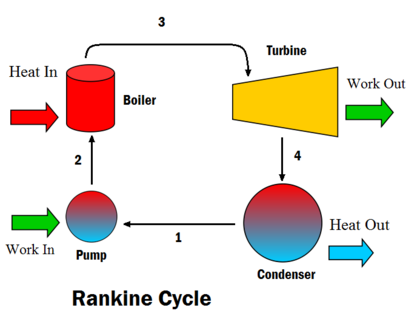In the realm of power generation, where efficiency is the key to sustainability and progress, the Rankine Cycle stands as an ingenious marvel, transforming heat into power with remarkable efficiency. Named after Scottish engineer William John Macquorn Rankine, this thermodynamic www.illinoisnews365.com/ cycle has become the backbone of many power plants, ensuring a seamless conversion of heat energy into mechanical work.
Table of Contents
ToggleUnderstanding the Rankine Cycle:
At its core, the Rankine Cycle is a thermodynamic process that converts heat into work. This cycle is the fundamental operating principle behind steam power plants, including those used for electricity generation. The cycle consists of four main stages: compression, heat addition, expansion, and heat rejection. These stages work in harmony to maximize the efficiency of the entire process.
Efficiency Unleashed:
One of the defining features of the Rankine Cycle is its ability to harness a wide range of heat sources. Whether it’s traditional fossil fuels, geothermal energy, or solar power, the Rankine Cycle adapts seamlessly, proving its versatility in various applications. The efficiency gains from this adaptability are crucial in an era where sustainable energy sources are at the forefront of global discussions.
Powering the Future:
As the world shifts towards cleaner and more sustainable energy solutions, the Rankine Cycle finds itself at the forefront of this transition. Advanced technologies and innovations continue to enhance the efficiency of the cycle, making it an even more attractive option for power generation. From combined heat and power systems to enhanced geothermal projects, the Rankine Cycle is paving the way for a greener and more efficient future.
Applications Beyond Power Plants:
While power generation is the most common application of the Rankine Cycle, its influence extends beyond electricity production. The cycle plays a crucial role in various industrial processes, such as refrigeration and waste heat recovery. Its adaptability and reliability make it a go-to solution for industries aiming to optimize energy usage and minimize environmental impact.
Challenges and Innovations:
No system is without challenges, and the Rankine Cycle is no exception. Researchers and engineers continuously strive to overcome limitations and enhance the cycle’s efficiency. Innovations in materials, design, and control systems are pushing the boundaries, unlocking new possibilities for the Rankine Cycle in a rapidly evolving energy landscape.
Conclusion:
In the grand tapestry of power generation, the Rankine Cycle stands tall as a testament to human ingenuity and our quest for efficiency. As we navigate the complex challenges of the 21st century, this remarkable thermodynamic cycle remains a cornerstone in our pursuit of sustainable and reliable energy solutions. The Rankine Cycle is not merely a part of our energy history; it is a driving force propelling us towards a cleaner, more efficient future.





